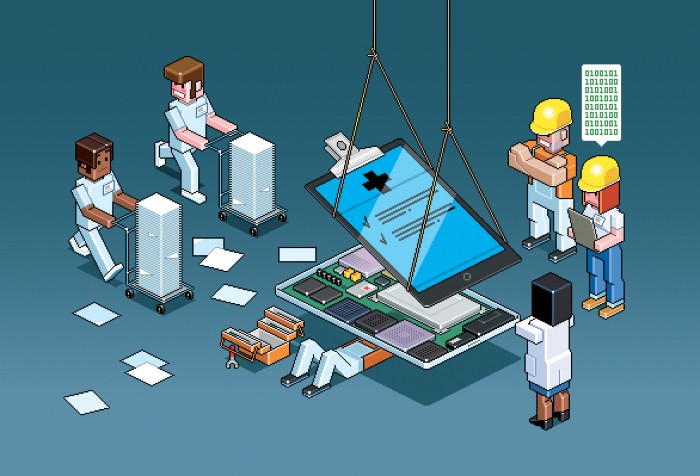Paper-Based vs Electronic Medical Records Software – Comparison
Patient data management is one of the most critical tasks undertaken by medical institutions. For a long time, paper-based record-keeping had been the norm, but with the advent of Electronic Medical Records (EMR) or EHR, the data landscape is changing rapidly.
While manual record keeping is considered the gold standard, in recent years, multiple medical institutions are increasingly shifting their focus to the electronic means of handling workflows.
Deploying an Electronic Medical Records Software has proven benefits for various hospitals and clinics, both on a small and a larger scale. The Healthcare industry, combined with the efficiency of such software, has shown better management and handling of internal functions.
Depending on the various factors that concern the hospital authorities, in this article, we shall look at the difference between Paper based vs Electronic Health Records (EHR) software in depth.
*Ease of Data Management
Paper-Based
Catering to thousands of papers, files, and reports can get challenging because the physical space required to maintain manual data is much larger. They call for proper management, sorting of every document so that it can be easily accessed as and when needed. Management might need temperature-controlled rooms to ensure data integrity.
Electronic Medical Records (EMR)
The digitized version of documents only needs a cloud server where the data can be stored and sorted in the required manner. The management can opt from the different types of cloud server as per the requirement.
Layout Consistency
Paper-Based Records
Having to be handled by various individuals, this form of data is highly inconsistent. At times, the handwriting is not comprehensive, or the information is formatted differently in different sections. These nuances can cause inconvenience amongst the authorities who need to access it.
Electronic Medical Records (EMR)
There are set formats of each data, which makes it easier to understand and study the information stored. The formats are filled in a standard way.
Accessibility of Data
Paper-based Records
Accessing data concurrently is not feasible in this methodology. Portability of papers and folders take time and therefore reduces efficiency.
Electronic Medical Records (EMR)
Since the data is available on the cloud, it can be accessed across the globe by the desired authorities. Considering the concept of remote consultations and working has been on the rise, EMR is the key to make it possible.
Scalability of Data
Paper-based Records
These records are hard to be shared and accessed using different means. While people have a comfort level with physical folders, those are scalable to an extent.
Electronic Medical Records (EMR)
As stated earlier, the data is saved in cloud-based servers and is scalable to significant limits. Cloud is an unending storage unit.
Security
Paper-based Records
Data security is cardinal to medical institutions; the information is confidential and has to be protected. Physical records are vulnerable to loss of data, paper, or breach.
Electronic Medical Records (EMR)
Electronic information can only be edited/maintained/viewed by individuals who have access. It is highly protected and has little to the negligible possibility of a breach.
Maintaining Backups
Paper-based Records
Keeping a backlog of paper records is very difficult, it will double not only the work but also the space required for storage. So, there is no backlog of data stored in physical forms.
Electronic Medical Records (EMR)
Cloud-based systems are updated with new technology and keep a backlog of the entire database. Loss of data can be quickly recovered in the old format.
Organizations have a regular backup process in place to make sure the safety of their data.
Easy Electronic Medical Records Software
With extensive experience working in the healthcare IT industry, Easy Solution provides EMR Software that is not only easy to adopt but can be customised according to the needs. With top-notch post-development support.
Key Features of Easy EMR
Generate Prescriptions in less than 60 seconds.
Easy to use patient visit details (OPD/IPD) modules.
Detailed demographic and clinical data analysis.
Billing and account manager for your accounting needs.
Available in 6 specialities
